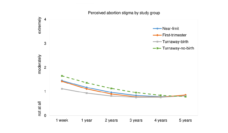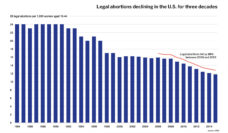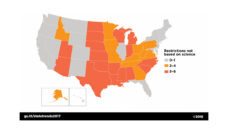Between 2010 and 2018, Ohio passed over 15 regulations restricting abortion access and care. The regulations included criminalizing abortion after 20 weeks gestation, restricting medication-induced abortions, and reducing funding for reproductive health clinics.
Overall, abortion rates in Ohio declined. On the surface, abortion opponents may see this as a sign that the regulations were a success. However, abortions decreased throughout the US at a similar rate during that same time period. This suggests that Ohio’s decline was not due to the legislative restrictions. More likely, increased access to contraception and sex education at both the state and national level led to fewer unintended pregnancies.
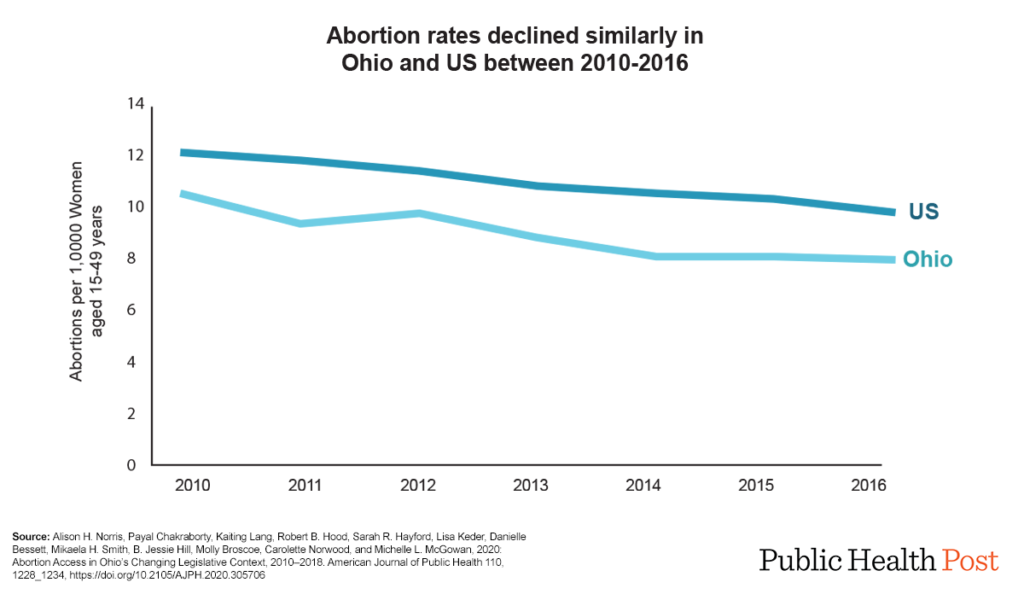
Alison H. Norris and colleagues took a closer look at what actually happened as a result of the legislative changes. Instead of reducing abortions, the policy changes limited who had access to what kind of abortion and when. As the figure shows, the restrictions delayed care. The number of abortions occurring early in the first trimester decreased, while the number occurring later in the first trimester increased. Abortions in Ohio continue to occur later in the first trimester compared to the national average.
Additionally, the study found that the number of abortions did not decrease equally across geographic regions. Access to abortion in urban settings remained relatively steady, while the number of abortions in rural areas dwindled, as seven out of Ohio’s 16 clinics were either forced to close or reduce service.
In most states, the decision as to what kind of abortion is appropriate for an individual is left to the provider and patient. In Ohio, legislative restrictions on medication instead left many individuals without a choice. The study found a sharp decline in medication-induced abortions compared to surgical following medication restriction, until an FDA drug approval revived access in 2016.
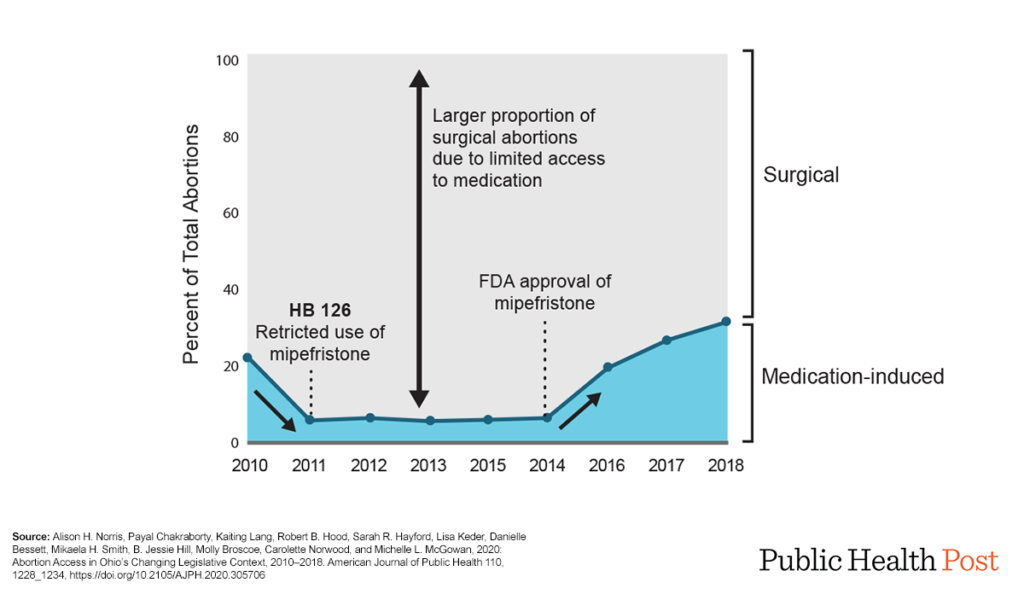
Laws restricting abortion access don’t reduce abortions or the need for them, they unfairly limit who has access to them. In Ohio and throughout the US, the most effective way to reduce the number of unintended pregnancies is to provide access to contraception and family planning care.
Databyte via , 2020: Abortion Access in Ohio’s Changing Legislative Context, 2010–2018. American Journal of Public Health 110, 1228_1234. Data visualization by Tasha McAbee.











